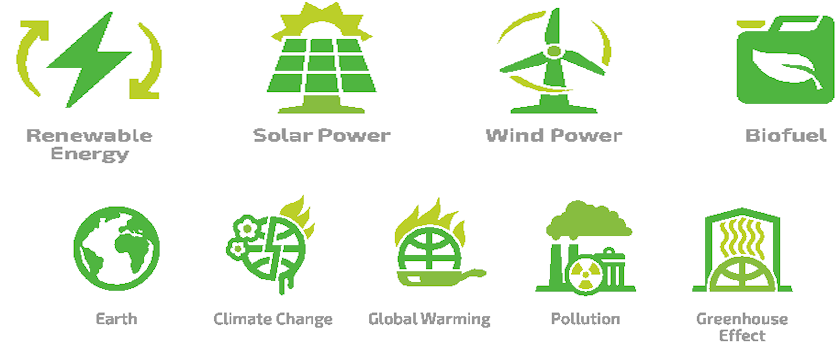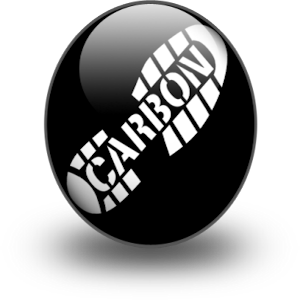
Hybrid power describes the combination of a power producer and the means to store that power in an energy storage medium.
In power engineering, the term 'hybrid' describes a combined power and energy storage system. It does not mean a "method," such as the popular use of hybrid to mean a vehicle like the Toyota Prius.
Examples of power producers used in hybrid power are photovoltaics, wind turbines, generators that use fuel.
Examples of energy storage media are batteries or hydrogen (for later use in fuel cells).
Hybrid Power System
Hybrid systems, like the name implies, combine two or more modes of electricity generation together, usually using renewable technologies such as solar photovoltaic (PV) and wind turbines. Hybrid systems provide a high level of energy security through the mix of generation methods, and often will incorporate a storage system (battery, fuel cell) or small fossil fueled generator to ensure maximum supply reliability and security.
Power engineering, also called power systems engineering, is a subfield of engineering that deals with the generation, transmission and distribution of electric power as well as the electrical devices connected to such systems including generators, motors and transformers. Although much of the field is concerned with the problems of three-phase AC power - the standard for large-scale power transmission and distribution across the modern world - a significant fraction of the field is concerned with the conversion between AC and DC power as well as the development of specialized power systems such as those used in aircraft or for electric railway networks.
Todays power engineers are becoming more focused on hybrid state of the art systems such as combined wind and solar powered units. The need for more environmentally friendly systems that produce consistent power supplies from all sides of nature is an evolving field that has made great strides in the last decade. More powerful photovoltaic cells with better storage and heat capacity, combined with more efficient wind turbines are making hybrid power systems a perfect solution for todays energy needs.
HydroNaturals can design a hybrid energy system that will fit the needs of your company or home site. Let us design one for you. Contact Us.
Carbon Offsets
Kyoto Protocol
Agree Or Disagree with this policy. Vote Now
A carbon offset is a reduction in emissions of carbon dioxide or greenhouse gases made in order to compensate for or to offset an emission made elsewhere.
The World Resources Institute defines a carbon offset as "a unit of carbon dioxide-equivalent (CO2e) that is reduced, avoided, or sequestered to compensate for emissions occurring elsewhere".
The Collins English Dictionary defines a carbon offset as "a compensatory measure made by an individual or company for carbon emissions, usually through sponsoring activities or projects which increase carbon dioxide absorption, such as tree planting."
The Environment Protection Authority of Victoria (Australia) defines a carbon offset as: "a monetary investment in a project or activity elsewhere that abates greenhouse gas (GHG) emissions or sequesters carbon from the atmosphere that is used to compensate for GHG emissions from your own activities. Offsets can be bought by a business or individual in the voluntary market (or within a trading scheme), a carbon offset usually represents one tonne of CO2-e".
The Stockholm Environment Institute defines a carbon offset as "a credit for negating or diminishing the impact of emitting a ton of carbon dioxide by paying someone else to absorb or avoid the release of a ton of CO2 elsewhere"
.The University of Oxford Environmental Change Institute defines a carbon offset as "mechanism whereby individuals and corporations pay for reductions elsewhere in order to offset their own emissions".
Carbon offsets are measured in metric tons of carbon dioxide-equivalent (CO2e) and may represent six primary categories of greenhouse gases.[5] The categories include: carbon dioxide (CO2), methane (CH4), nitrous oxide (N2O), perfluorocarbons (PFCs), hydroflourocarbons (HFCs), and sulfur hexaflouride (SF6). One carbon offset represents the reduction of one metric ton of carbon dioxide or its equivalent in other greenhouse gases.
There are two markets for carbon offsets. In the larger, compliance market, companies, governments, or other entities buy carbon offsets in order to comply with caps on the total amount of carbon dioxide they are allowed to emit. This market exists in order to achieve compliance with obligations of Annex 1 Parties under the Kyoto Protocol, and of liable entities under the EU Emissions Trading Scheme. In 2006, about $5.5 billion of carbon offsets were purchased in the compliance market, representing about 1.6 billion metric tons of CO2e reductions.
In the much smaller, voluntary market, individuals, companies, or governments purchase carbon offsets to mitigate their own greenhouse gas emissions from transportation, electricity use, and other sources. For example, an individual might purchase carbon offsets to compensate for the greenhouse gas emissions caused by personal air travel. Many companies offer carbon offsets as an up-sell during the sales process so that customers can mitigate the emissions related with their product or service purchase (such as offsetting emissions related to a vacation flight, car rental, hotel stay, consumer good, etc.). In 2008, about $705 million of carbon offsets were purchased in the voluntary market, representing about 123.4 million metric tons of CO2e reductions.
Offsets are typically achieved through financial support of projects that reduce the emission of greenhouse gases in the short- or long-term. The most common project type is renewable energy, such as wind farms, biomass energy, or hydroelectric dams. Others include energy efficiency projects, the destruction of industrial pollutants or agricultural byproducts, destruction of landfill methane, and forestry projects. Some of the most popular carbon offset projects from a corporate perspective are energy efficiency and wind turbine projects.
Carbon offsetting has gained some appeal and momentum mainly among consumers in western countries who have become aware and concerned about the potentially negative environmental effects of energy-intensive lifestyles and economies. The Kyoto Protocol has sanctioned offsets as a way for governments and private companies to earn carbon credits which can be traded on a marketplace. The protocol established the Clean Development Mechanism (CDM), which validates and measures projects to ensure they produce authentic benefits and are genuinely "additional" activities that would not otherwise have been undertaken. Organizations that are unable to meet their emissions quota can offset their emissions by buying CDM-approved Certified Emissions Reductions.
Offsets may be cheaper or more convenient alternatives to reducing one's own fossil-fuel consumption. However, some critics object to carbon offsets, and question the benefits of certain types of offsets.
Offsets are viewed as an important policy tool to maintain stable economies. One of the hidden dangers of climate change policy is unequal prices of carbon in the economy, which can cause economic collateral damage if production flows to regions or industries that have a lower price of carbon - unless carbon can be purchased from that area, which offsets effectively permit, equalizing the price.
Whether you agree or disagree with this policy we would like to get your vote


